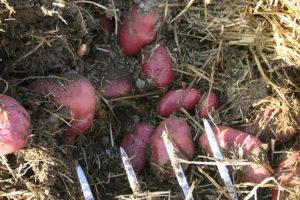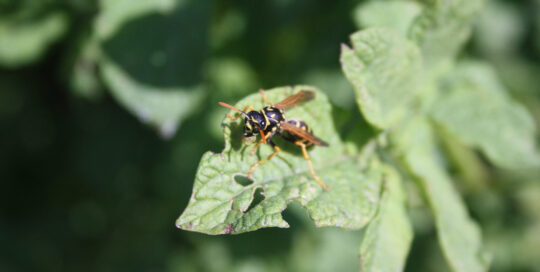Potato pests require early planning
Views: 7326

After a record setting cold spell around here lately, I’m more than ready to think about spring and everything we can plant. One of my favorite crops are potatoes because they are relatively easy, produce big yields, and there really is a difference between store bought potatoes and homegrown varieties.
For a lot of people, growing potatoes is as simple as putting them in the ground in the spring, adding soil or straw over them as they grow to prevent them from sunscalding, fertilizing, and then digging them up in the fall. Others don’t have such an easy time of it. With pests such as wireworms, tuber flea beetles, aphids, potato leafhoppers, and the dreaded Colorado potato beetle a lot can attack this otherwise low-maintenance crop.
Preventing Pests
Before you even plant your potatoes, you should make a plan to fight the potential pests. For several years I battled Colorado potato beetles. It was maddening. If we didn’t keep up with them, they would defoliate the plants. So we picked them off the plants, dusted with diatomaceous earth, and kept moving the place where I planted them. Then they were gone. I don’t feel that I can take credit, but for whatever reason, I’m happy to not have to deal with them any longer.
Wireworms are a challenge because you may not realize you have them until it’s too late to do anything. If you have had a problem with them the previous year – which is obvious because tiny worms or at least worm tunnels are in your potatoes – don’t plant even close to the same area. And, if you usually use your own seed potatoes from what you saved from the last year, buy new ones. You don’t want to infect a new area.
Flea beetles
I’ve had more problems with flea beetles on leafy crops, but they can attack potatoes. While these tiny chewers might not damage your potatoes to the point where they perish, they can transmit diseases to the plants that can do them in. When flea beetles are a perennial issue, plant a trap crop, such as mustard, where you can keep them contained. Diatomaceous earth is effective, as well as using a spray with azadirachtin, which is a component of Neem oil. Azadiracthtin messes up the insect’s life cycle (for example, it won’t molt correctly), and ends the infestation. It doesn’t work immediately – actually it will take weeks – but it’s a good tool for long term issues.
A spray with azadirachtin is also useful on the other potato pests such as the aphids, although it would only be necessary if you had an acute aphid problem since they’re really easy to eliminate with a strong stream of water.
Leafhoppers
Potato leafhoppers don’t only remain on potatoes since these tiny insects also have a taste for hops, beans, and many other vegetables. And because of their small size, only about 1/4 inch long and kind of a translucent green color, you might not know you have them until your plants show signs of distress. “Hopper burn,” as it’s often called, is evident with the ends of the plants turn yellow and ultimately brown in a somewhat V shape at the leaf tips.
When they feed, their saliva has a compound that is toxic to the plants causing this to occur. Since they’re good at jumping out of sight, or running away, the best way to keep them in check is to have plenty of beneficial insects in your garden. Lacewing larvae (also called aphid lions) are deadly to the leafhoppers. But if you have an immediate issue, use diatomaceous earth or an insecticidal soap making sure you spray underneath the leaves as you go.
Potatoes are really a pretty easy crop, but if you live in an area where there is more pest pressure, by preparing now you’ll be ready to eliminate any pests early in the season.
Meet Amy Grisak
Amy is a freelance author and photographer in Great Falls, MT who specializes in gardening, foods, and sustainable agriculture. She provides information on every kind…
Amy's Recent Posts

Looking into the Crystal Ball for a Pest Report








